Of Canopies and Caves
This is the view down over the lower storey of the rainforest canopy, in Mulu National Park, Sarawak, from the longest canopy skywalk in the world. Nigh-on 500m of suspension bridge rattles and sways above the tops of the lowest trees, pinned to the sleek trunks of emergent giants.
It’s a place where I discovered that the nine year old’s theory of repeated exposure curing vertigo holds some force. And the nine year old, in turn, discovered a fear of heights.
Well, not so much heights, exactly. His objection, to be precise, was to the skywalk, and in particular the plastic packing tape which held the creaking boards together.
Or, as he said, “What do you mean what am I worried about? This thing is held together with string and prayers.”
Of course, to the seasoned sufferer of vertigo, used to coaxing oneself across drops by painstaking, borderline obsessive, risk assessment, the packing tape was largely irrelevant.
It’s the supporting structure that we obsessives look at. And the high-tension steel cables and their supports are sturdy and long.
Not that that entirely dispels the visions of the whole thing tearing loose and swinging wildly, dumping Scandinavian tourists and SLRs into the abyss like so many blood-crazed cannibals at the end of Indiana Jones and the Temple of Doom.
But it does keep the sweating and pulse rate down to a minimum.
It’s a pretty amazing place, Mulu, after the deforestation which runs, as depressingly often in Malaysia, right up to the park boundaries.
Particularly when seen from the river.
Shadowed by implausible limestone edifices, which protrude from deep, protected rainforest, its gigantic caves house one of the richest underground ecosystems in the world.
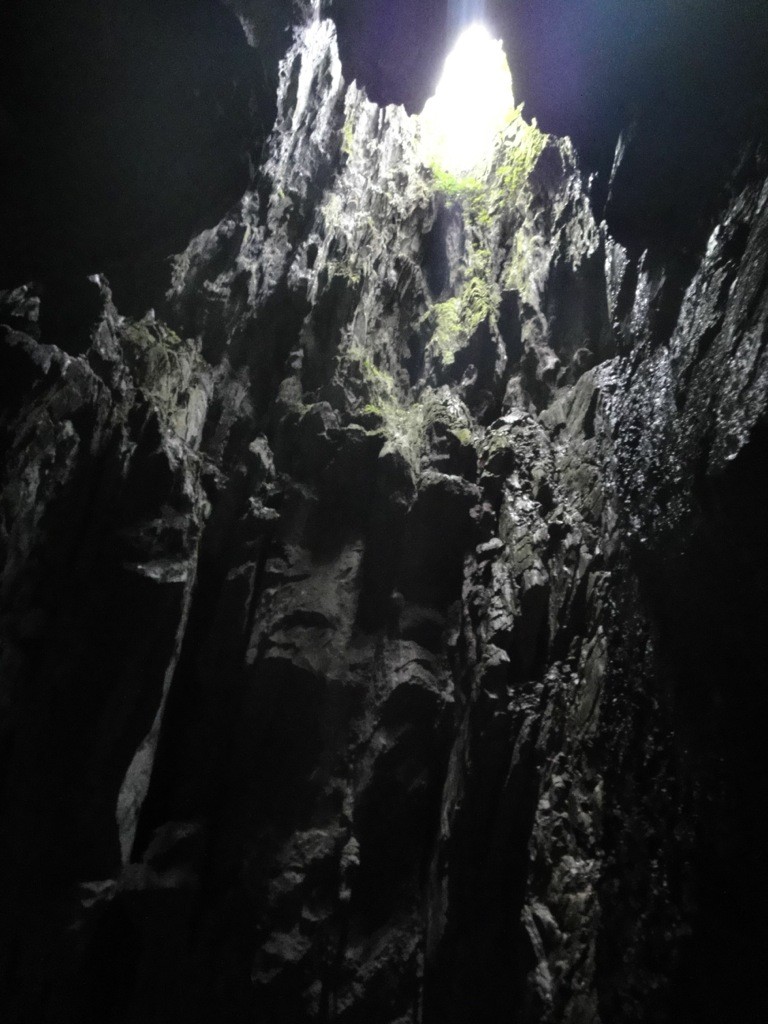
In the Cave of the Winds, ghostly chambers of calcite and moonmilk with plummeting sinkholes “breathe” dramatically enough for the subterranean wind to riffle your hair, like the oncoming storm in Journey to the Centre of the Earth.
A turbulent underground river runs through Clearwater Cave, nexus of a system which winds for 150km or more through dense, fine-grained limestone and chambers as beautiful as the underground river in Sabang, the Philippines.
After all he has seen on our longterm journey around the world, Z is pretty hard to impress. But Clearwater Cave left him gobsmacked. “This is really beautiful, Mum,” he volunteered. “It’s even more beautiful than Halong Bay.”
The river exits, after a long, chilling underground journey, into an icy, transparent jungle waterway, trees shading its sandy base, its current stalled by timber booms, which makes for quite wonderful swimming.
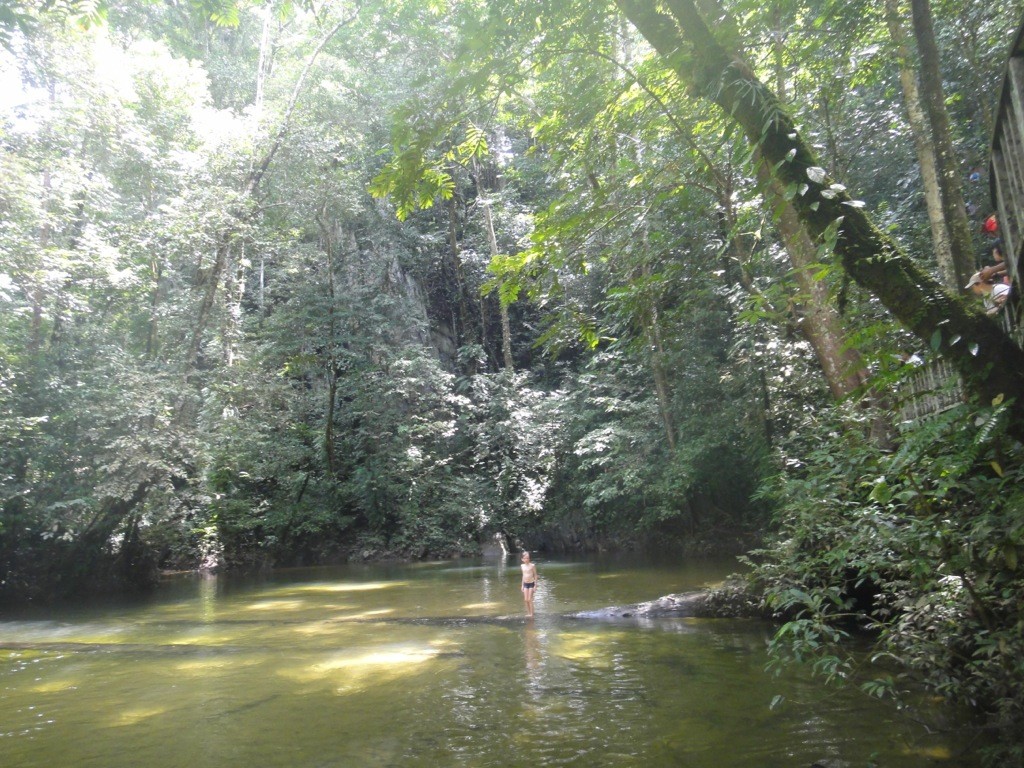
On the skywalk, however, it’s hot. Two or three degrees warmer than the temperature at ground level, thanks to the sheer variety of life fighting for light and hitching a lift on the trunks of the tallest trees.
Creaking and rocking between aerial platforms, we watched a troop of fully-wild macaques scooting through the trees, scrambling up and down lianas, freezing whenever they caught a sight of us.
And, given our last encounter with small primates was this little fella, lovingly hand-reared on crackers in a Lanahan longhouse for his ultimate destiny, the cooking pot, it was wonderful to see them in the wild.
Other cool stuff we saw along the way? A chameleon.

A bug as colourful and detailed as Egyptian scarab jewellery, with filigree wings.
Delicate dragonflies. Camouflaged stick insects. An ant colony, rattling defensively inside the hollows of a vine. And a scarlet and black striped millipede, which Z duly christened Dennis the Menace.
The rainforest is diverse, but hardly abundant. In fact, it’s one of the more competitive environments there is.
There are butterflies here which disguise themselves as flowers. A blow in the evolutionary war against the flowers which will disguise their sexual parts as female insects, leaving the males dry-humping frantically from plant to plant, transferring pollen as they go.
It’s a strange thing to see. One which reminds me of the evolutionary biologist Jared Diamond’s suggestion in Collapse that, aeons from now, alien archaeologists investigating our planet may interpret our civilisation as simply a vector for one all-dominant lifeform.
Corn.

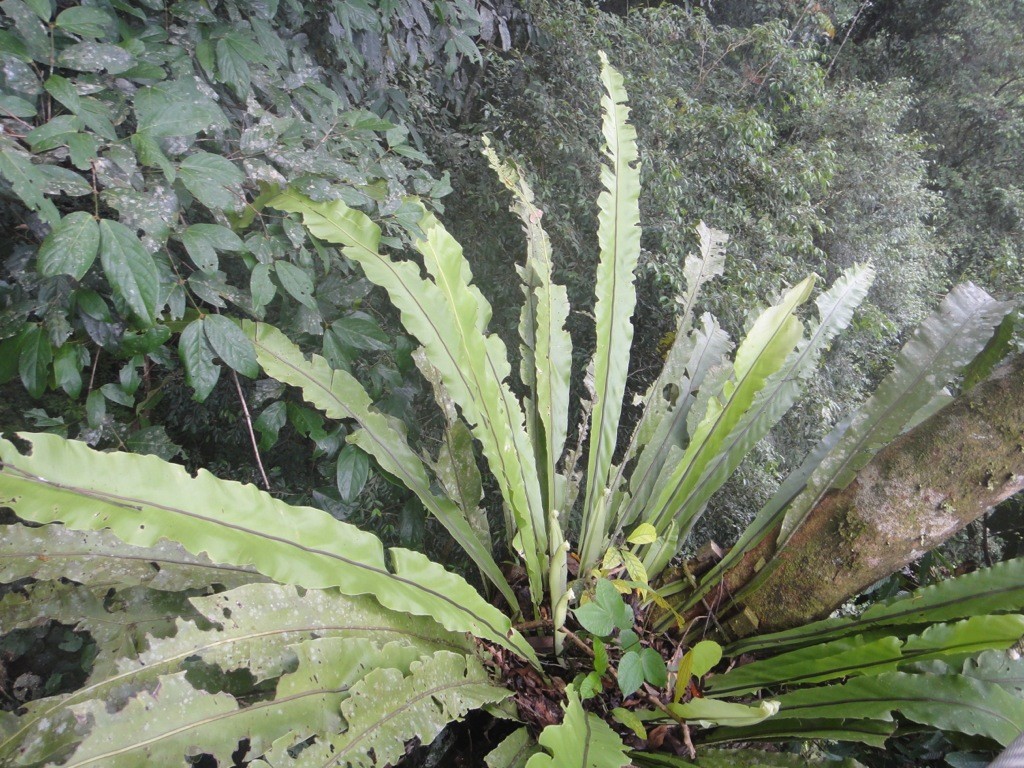
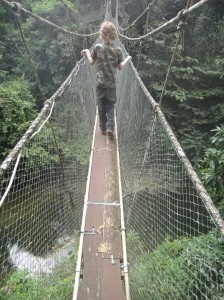
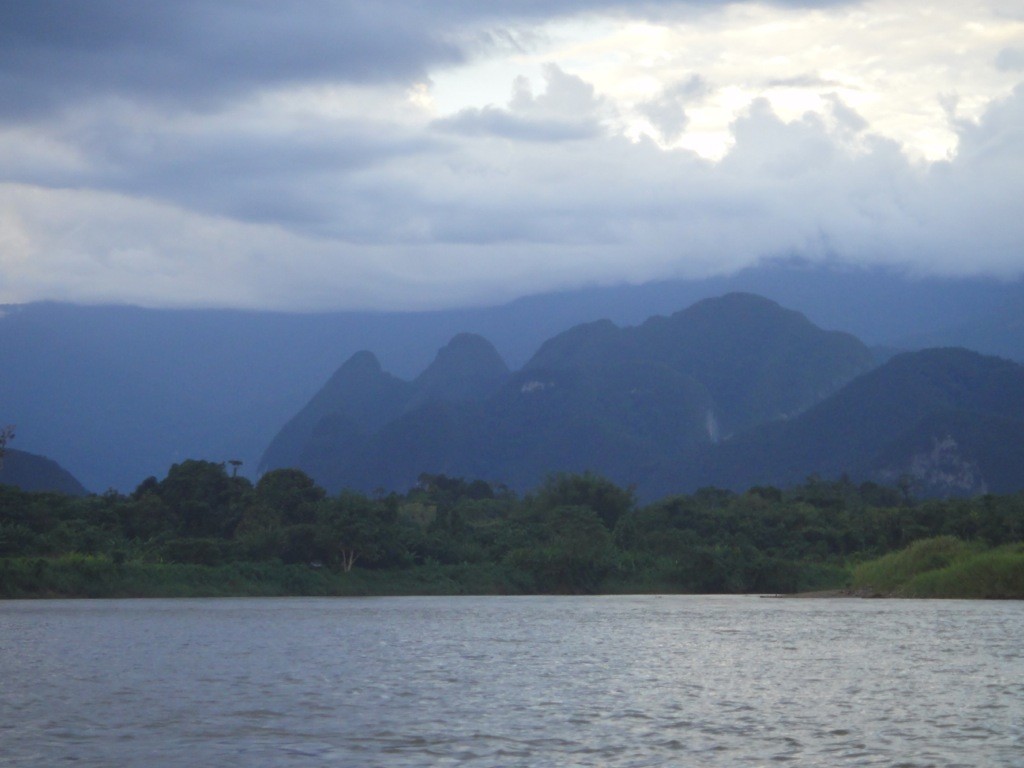
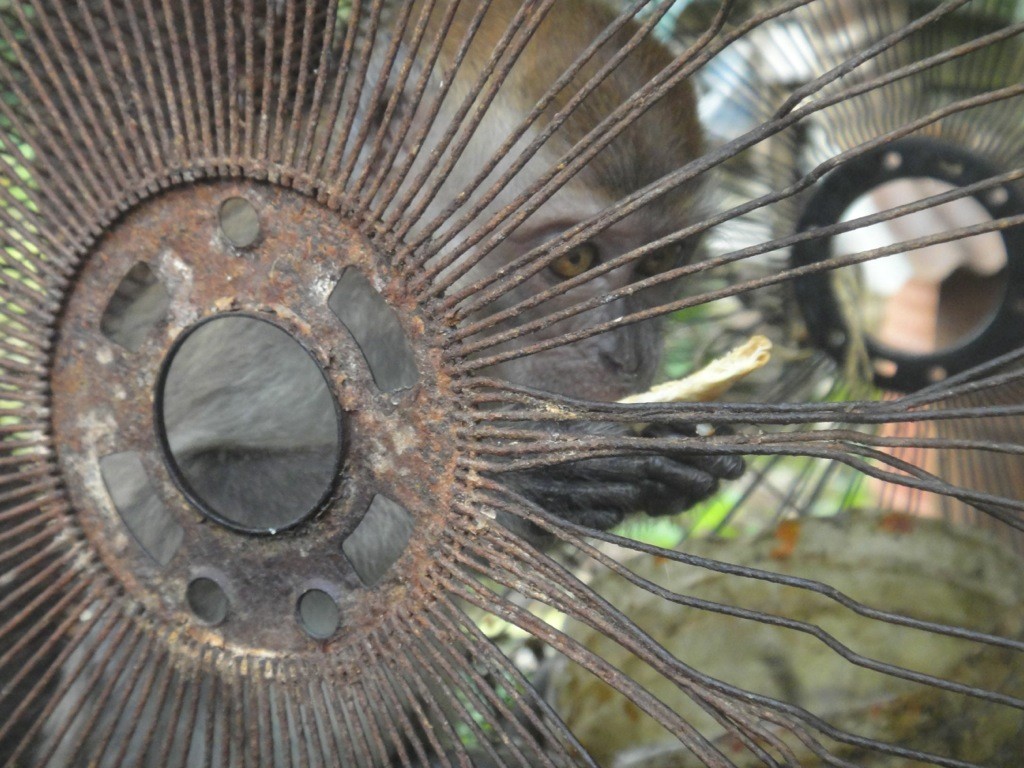
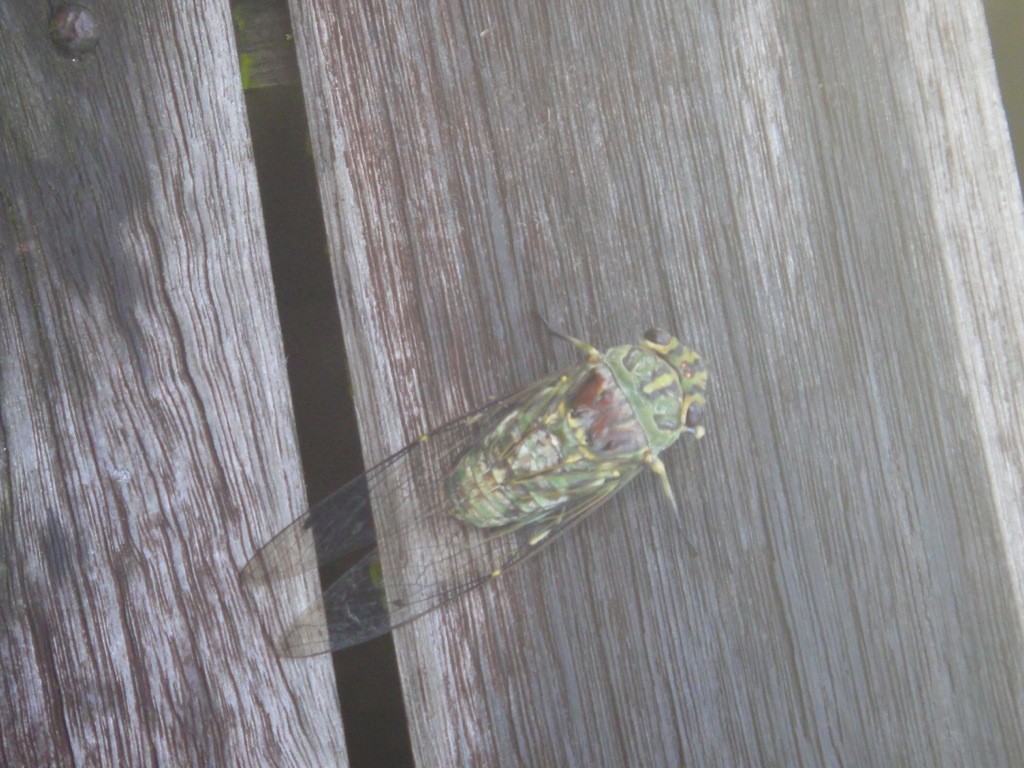
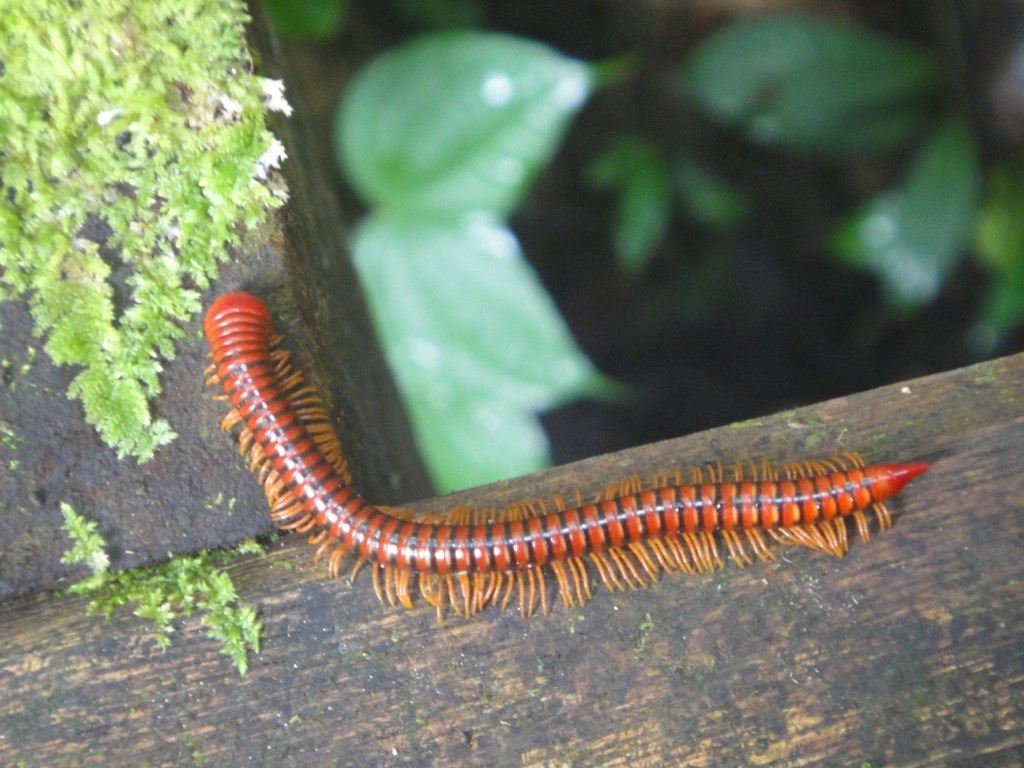
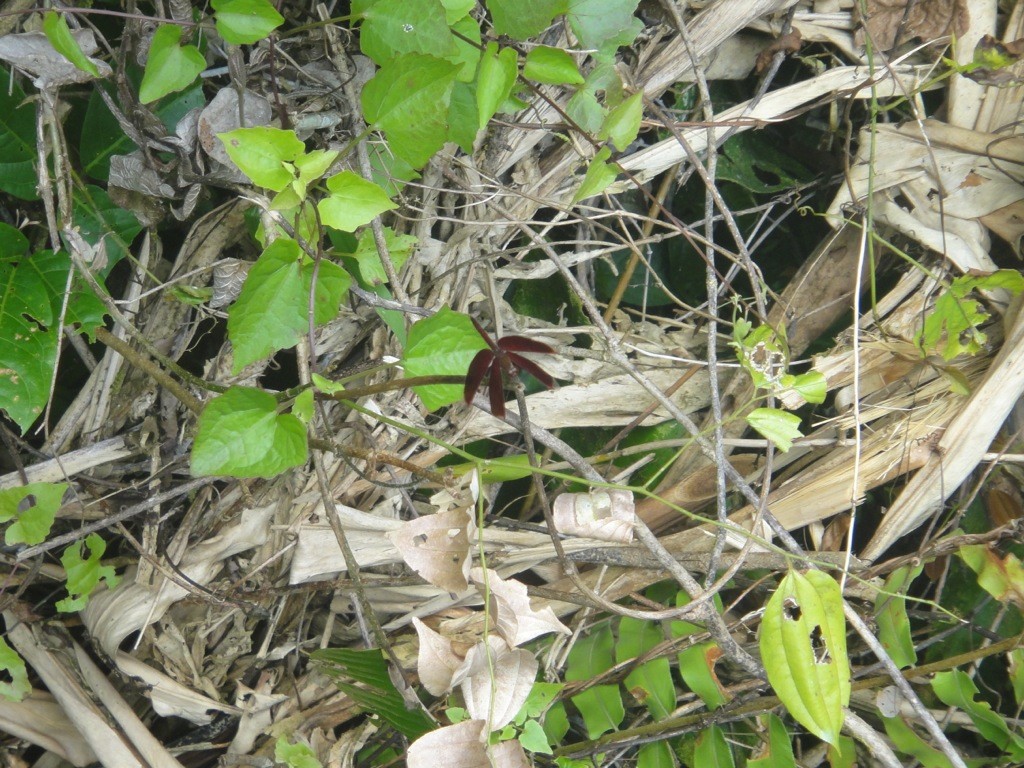
Love your blog! These photos are great, I love close ups of colourful bugs and the likes, especially the Chameleon…had to look twice to spot him! 🙂
Thank you!
I’m with Z on this one, it’s not so much the height factor, but fear of falling and sub standard sticky tape.
Corn????????????????????????
Yep. He argues that from tiny beginnings it has now colonised great swathes of the planet. Great book, if you have time: particularly if you’re planning to visit Easter Island… All about how civilisations collapse and why some survive.
Ooh beautiful. What gorgeous photos.
You do realise that I’m vicariously satisfying my own wanderlust through you two don’t you? I love this blog. The idea of a mother and son travelling the world alone together has just completely captured my imagination.
Thank you, madame. I never realised you were a former traveller yourself…
We have now added Mulu National Park to our list of “must see” places! The Cave of the Winds sounds awesome. The packing tape on the suspension bridge was very “interesting” and would definitely increase my safety concerns, not assuage them as perhaps intended (Ha!). We also loved the insect photos, especially Dennis the Menace!
It really is a must-see. With the bats, as well… Oddly, the only safety issue they seem to have had was someone diving into the stream at Clearwater and breaking his neck. Which seemed very strange, and sad, as it doesn’t seem diveable from the outside in the slightest.